INDIAN ARMED FORCES CHIEFS ON OUR RELENTLESS AND FOCUSED PUBLISHING EFFORTS

The insightful articles, inspiring narrations and analytical perspectives presented by the Editorial Team, establish an alluring connect with the reader. My compliments and best wishes to SP Guide Publications.

"Over the past 60 years, the growth of SP Guide Publications has mirrored the rising stature of Indian Navy. Its well-researched and informative magazines on Defence and Aerospace sector have served to shape an educated opinion of our military personnel, policy makers and the public alike. I wish SP's Publication team continued success, fair winds and following seas in all future endeavour!"

Since, its inception in 1964, SP Guide Publications has consistently demonstrated commitment to high-quality journalism in the aerospace and defence sectors, earning a well-deserved reputation as Asia's largest media house in this domain. I wish SP Guide Publications continued success in its pursuit of excellence.
Kudos to Humane IAF
The IAF has always had a major role in disaster relief and rescue operations irrespective of whether it is natural or man-made and has always acquitted itself exceptionally well
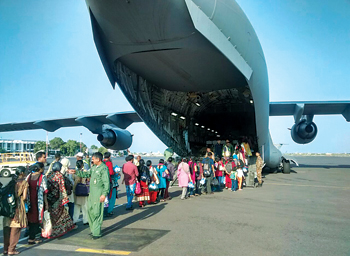
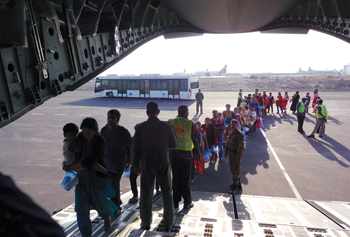
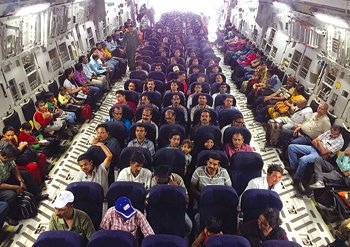
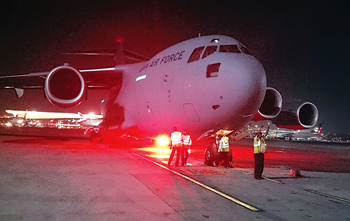
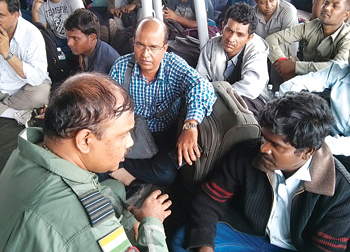
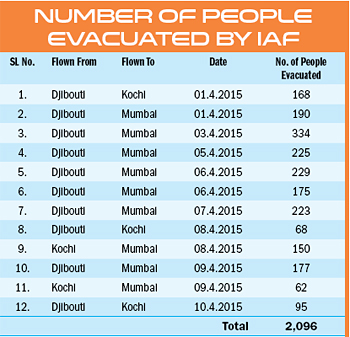
In the Arab state of Yemen, struggle between two sects of Muslims— the Zaidi Shia backed by Iran and Sunnis supported by Saudi Arabia— for dominance had been simmering since 2011. However, in the middle of last year, Sana’a, the capital city of Yemen, was plunged into a crisis when a violent conflict broke out between the Houthi rebels who represent the Shia community, led by Abdul Malik al-Houthi, and the forces of the somewhat weak Sunni government of Yemen. A UN-brokered deal could not prevent escalation of the conflict which has the character of wider sectarian struggles that are currently raging in the Middle East impinging on the region’s heterogeneous social fabric. The confrontation in Yemen is not a simple and straightforward case of another conflict between the Shias and the Sunnis; but is infinitely more complex and is born out of extreme animosity between the Houthis and the Salafists, the Sunni Islamists of Yemen that are also supported by Al Qaeda. The Shiite Houthi rebels succeeded in toppling the government of President Abdrabbuh Mansur Hadi and extended their control over large parts of the country. The President of Yemen fled as soon as the Houthis launched a determined offensive on the capital city of Sana’a.
In January this year, when the situation in Yemen appeared to be spiralling out of hand, apprehending serious security threat, the Ministry of External Affairs (MEA) issued advisories to India citizens working in Yemen to leave the country. This apparently did not seem to have any impact on the 4,000-odd Indian citizens working in that country who perhaps were not willing to give up their lucrative source of income. For India, the Indian nationals working abroad constitute an important economic dimension. Altogether in the world, there are 21 million Indian citizens employed outside India whose annual remittance to the home country is estimated at $70 billion. This is far more than any other country receives from its overseas workers. Almost 25 per cent of the total global population of expatriate Indians are employed in the Middle East. These are largely employed as health care professionals (read nurses), construction workers, drivers and in miscellaneous assignments in the hospitality industry. Evacuating Indian citizens from conflict-ridden zones in the world is thus an important responsibility of the Government of India, an area in which it has been appreciably responsive. India has evacuated 7,000 citizens from Iraq till November last year as well as nearly 18,000 from Libya in 2011, as violent conflicts raged in these nations.
Operation Raahat Launched
Concerned about the rapidly deteriorating security situation in Yemen, the MEA issued a second travel advisory on February 20, 2015, urging Indians to avoid travel to Yemen as well as to leave the country. Finally on March 25, the MEA once again issued an urgent advisory urging all Indian citizens to evacuate as soon as possible. Soon after the third advisory was issued by the MEA, on March 27, 2015, the Royal Saudi Air Forceled a coalition of Arab states launched air strikes against the rebels of the Shiite Houthi faction. Thus it was that the Government of India had no option but to launch a massive operation employing all the resources at its command to recover more than 4,000 Indian citizens who were trapped in Yemen.
A massive rescue operation with a number of war ships of the Indian Navy, C-17 Globemaster III heavy-lift transport aircraft of the Indian Air Force (IAF) and civilian airliners from Air India was launched immediately. The exercise was code named ‘Operation Raahat’ and was conducted under the overall supervision of the Minister of State for External Affairs, General V.K. Singh (Retd), the former Chief of Army Staff.
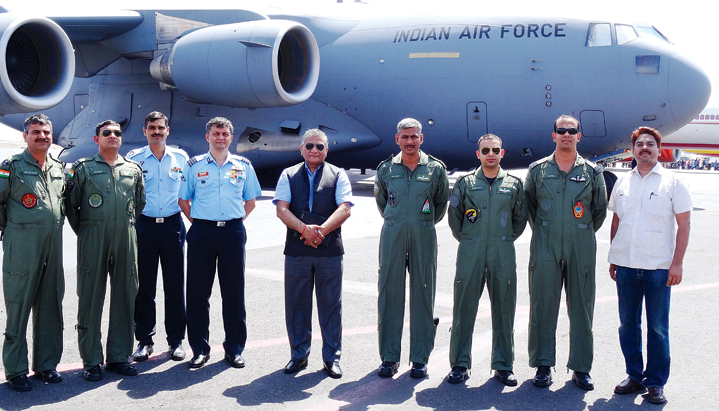
In a well coordinated operation involving multiple agencies, the C-17 Globemaster III strategic airlift aircraft of No. 81 Skylord Squadron based at Air Force Station Hindon, near Delhi, commencing on April 1, 2015, operated continuous shuttle flights from Djibouti to Mumbai and Kochi evacuating a total of 2,096 hapless souls. The national carrier Air India deployed two Airbus A320 and one Boeing 777 to assist in the evacuation of the stranded Indian citizens. The operation successfully concluded on April 10, 2015.
The Way Forward
Operation Raahat once again convincingly brings to the fore the strategic reach the transport fleet provides to the IAF. This capability is not only critical for projection of national power, it also helps boost confidence levels in the huge Indian expatriate community that the nation will stand by them in the hour of need. The fact that India’s experience and expertise in mounting large-scale rescue operations in crisis-ridden areas or zones of conflict is recognised the world over, is evident in the request to the Government of India for assistance from 32 countries in evacuating their citizens from the war zone in the Middle East.
The IAF has always had a major role in disaster relief and rescue operations irrespective of whether it is natural or manmade. The organisation has always risen to the occasion and acquitted itself exceptionally well each and every time bringing glory to the service and to the nation. This peacetime role of the IAF is perhaps as critical as its role in war. The IAF needs to examine the need and the feasibility of creating a specialised apex body for this role and provide it with the required resources of manpower, equipment and infrastructure. The government on its part must accord due priority in the creation and sustenance of such an organisation. The IAF must be kept prepared not only for the defence of our motherland; but must also possess the capability to respond swiftly in aid to civil authority both within the country and in distant lands.





